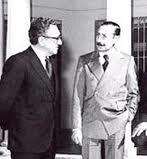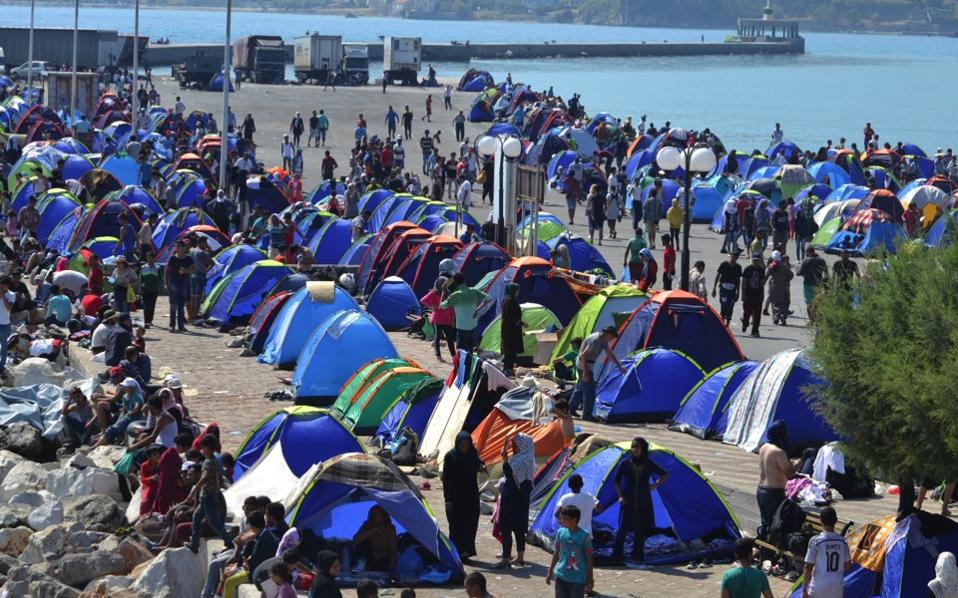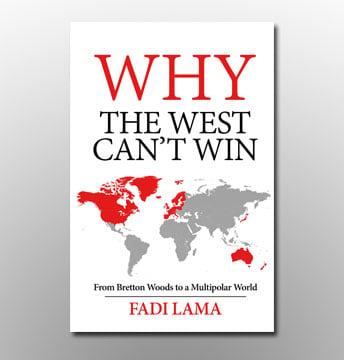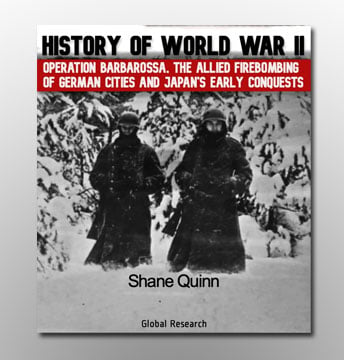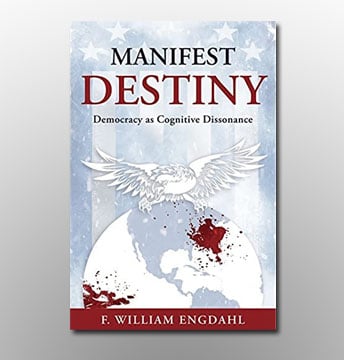“O poder não corrompe as pessoas, apenas as revela!”
Heloísa Helena
“O PMDB trata de tentar aturar o PT hoje por conveniência – e, nenhuma descoberta no campo da ciência política, na primeira oportunidade arrematarão o pé nos fundilhos do PT, e se estiverem de muito bom humor sem dar tiros a todos os lados, o que é improvável que aconteça. Isso deve acontecer na eleição de 2014, mas pode ser adiado de acordo com as costuras partidárias que se deem até lá. (…) Em briga de casal bandido, costuma haver divórcio – e quem se mete nela, é atacado por ambos os lados” (artigo Aliança PT-PMDB: Briga de Casal – Mas de Casal Bandido, publicado por este autor em dezembro de 2012 no Observatório da Imprensa).
Se não era necessário ser cientista político nem aspirante a Mãe Diná para fazer tal constatação há 4 anos, tampouco era preciso ter conhecimento de algumas das centenas milhares de cabos liberado por WikiLeaks revelando os segredos de Estado dos Estados Unidos, que trazem à luz inclusive a subserviência da cúpula do Partido dos Trabalhadores (PT) aos “diplomatas” norte-americanos. Nem mesmo do telegrama denunciado por Julian Assange na primeira semana de maio deste ano, revelando que Michel Temer se prestou a ser informante dos porões do poder de Washington.
O golpe sempre esteve mais que anunciado no Brasil: era apenas uma questão de tempo. Se setores progressistas brasileiros sempre reconheceram que um novo golpe à democracia esteve latente na última década, grande parte da “esquerda” nacional acabava sempre subestimando a capacidade de a oposição executá-lo.
Seu entendimento esteve distraído pelos deslumbres com o poder, a começar pelos “intelectuais” político-partidários. Renan Calheiros, José Sarney, senadores apoiados pelo Palácio do Planalto petista para assumirem a presidência do Senado. O novo “companheiro” Henrique Meirelles, assim chamado por Luiz Inácio e Dilma, nomeado para controlar a economia do país. O abraço fraternal de Luiz Inácio em Paulo Maluf. O também denominado “companheiro” Michel Temer tornou-se vice-presidente à base de confetes (quem se lembra?).
A “esquerda moderada” jamais foi capaz de enxergar, no alto de seu tamanco da arrogância que patrulhava de toda e qualquer crítica construtiva, que a aliança aos velhos oligarcas e coroneis deste país em nome da “governabilidade” nada mais era que entregar a cabeça do próprio “governo neoliberal com aspecto humano” (nas palavras do professor doutor Michel Chossudovski), em uma bandeja às classes dominantes. E junto, a cabeça de mais de 150 milhões de cidadãos pertencentes às classes menos favorecidas.
Patrulhamento petista sem nenhuma diferença do tom agressivo hoje esbanjado pateticamente pelos setores reacionários contra toda e qualquer diferença de ideias, ainda que sem bandeira partidária. Hoje, esses mesmos “intelectuais”, entre eles Emir Sader, desesperados diante da perda do poder, voltam a adotar seu velho discurso mais à esquerda, mesmo discurso que durante os pouco mais de 13 anos do PT no poder, tacharam de ultra-esquerda radical. Emir Sader é especialmente apontado aqui pois, nos nada remotos idos de 2014, qualificou integrantes do Movimento dos Trabalhadores Sem-Teto (MTST) de “cães vira-latas”. O motivo? Reivindicavam moradia digna na cidade de São Paulo, onde o Prefeito era e é Fernando Haddad do PT, ao qual o “intelectual” é filiado.
Ironia do destino: o PT necessita hoje, desesperadamente, com o engajamento sobretudo através da tentativa de politização junto à sociedade por parte de movimentos sociais como o MTST, e de comunicadores de uma mídia realmente alternativa (outrora qualificada de “radical) a fim de tentar reverter o impedimento da presidente Dilma Rousseff, tarefa quase impossível.
Grande Mídia: De Ilusória “Companheira” a Inimiga
Em entrevista à rede de TV venezuelana Telesur no início de maio deste ano, a presidente Dilma observou que o Brasil carece da presença de meios de comunicação com enfoques diversos, devido ao fato de que, dentre todos os existentes, uma grande quantidade é regida sob uma mesma tendência editorial.
Lamentou que não existam grandes emissoras de televisão ou jornais que difundam informação com uma visão distinta dos já estabelecidos, em sua maioria com tendências direitistas. Demagogia pouca, grande bobagem, marcou o governo federal sob o PT.
O PT nunca fez o menor esforço para regular a mídia brasileira, e a própria recém-empossada presidente Dilma afirmou, em 2011, que o cidadão não precisava de Leis de Imprensa existente nos países com democracia mais avançada do mundo, pois “tem o controle remoto”.
Sobre o patrocínio petista à mesma mídia contra quem oportunisticamente esperneia hoje, a revista Carta Capital relatouem Publicidade Federal: Globo Recebeu R$ 6,2 Bilhões dos Governos Lula e Dilma, que “entre os jornais, O Globo foi o que mais recebeu verbas; revista Veja recebeu mais de R$ 700 milhões no período. (…) Lula e Dilma investiram um total de R$ 13,9 bilhões para fazer propaganda em todas as TVs do país”.
E pontuou ainda: “A parte destinada somente às emissoras da Rede Globo representa quase metade desse total. Apesar disso, a porcentagem destinada à Globo tem sido reduzida. Ao final do governo de Fernando Henrique Cardoso, em 2002, as emissoras globais detinham 49% das verbas estatais destinadas à propagada em TV aberta, chegaram a 59% durante o governo Lula e, no ano passado, a Globo ainda liderava com R$ 453,5 milhões investidos, mas do total, o valor representa 36%”.
Pois é tão proibido pensar e se expressar a fim de promover a auto-crítica agora, entre militantes petistas mais fanatizados, quanto entre a ala mais reacionária do país. Duas faces de uma mesma moeda raivosa, discriminatória, politiqueira.
Casuísmo na “Revolução Social” do PT
Revolução social do discurso, em grande medida maquiada, fundamentada em demagogias e muito oportunismo. Em poucas palavras, assim se pode definir o PT à frente do governo federal – não fechado em argumentos e retóricas (maior arma petista, historicamente), mas em fatos incontestáveis.
Ao longo destes mais de 13 anos com o PT no Palácio do Planalto, o Brasil seguiu no inaceitável posto de último país do mundo em gastos proporcionais em educação, em relação ao Produto Interno Bruto (PIB). Através de programas de financiamento, diversos jovens tiveram acesso a universidades particulares, mas não houve melhoria e construção significativa de novas universidades federais.
O PT estabeleceu as cotas, medidas louváveis; mas não promoveu melhora no ensino básico a fim de, algum dia, as etnias menos favorecidas possam ingressar nas melhores universidades pelos próprios méritos. Em fevereiro de 2013, o Caderno de Pensamento Crítico Latino-Americano (CLACSO) e o Seminário 10 Anos de Ações Afirmativas: Conquistas e Desafios, organizado pela Faculdade Latino-Americana de Ciências Sociais (FLACSO) em parceria com o Laboratório de Políticas Públicas da Universidade do Estado do Rio de Janeiro (Uerj), apontaram em um debate exatamente a dificuldade de alunos universitários cotistas em acompanhar adequadamente o ritmo das aulas. Pois políticas insuficientes, possuem resultados ineficientes.
Segundo dados da Unesco, o nível educacional do Brasil, com cerca de 50% de analfabetos entre plenos e funcionais, está entre os mais baixos da América Latina, e na posição de 88º no mundo. Segundo o Instituto Brasileiro de Geografia e Estatísticas (IBGE), em 2006, último ano do primeiro mandato do presidente Lula, 75,2% dos municípios não possuíam centros culturais, em 91,3% não havia salas de cinema, em 78,8% não havia teatros nem salas de espetáculo, 7,1% não contavam com museus e 10,9% sequer possuíam uma biblioteca. Não há indicativos de que essa situação catastrófica tenha tido alguma melhora nos últimos anos.
O partido prova de seu próprio veneno agora: a despolitização da sociedade hoje a faz refém, como sempre, da manipulação descomedida da mídia de desinformação em massa. Mesmo veneno, entre tantos, provado através da altamente reacionária lei anti-terrorismo aprovada pela presidente por Dilma, a qual diminui possibilidades de resistência agora, enfraquecendo movimentos sociais, manifestações públicas e até uma necessária desobediência civil pacífica, dos quais o PT tanto depende para a sobrevivência agora.
Atendendo aos interesses das oligarquias nacionais e de Washington, mas contrariando a preservação ambiental, a presidente Dilma aprovou o Código Florestal. Telegramas secretos emitidos pela “Embaixada” dos Estados Unidos em Brasília liberados por Wikileaks, revelam o lobby nos bastidores dos norte-americanos, visando especialmente à Amazônia (leia Em Telegrama, Embaixador é Favorável à Redução de Reserva Legal: https://cartacapitalwikileaks.wordpress.com/2010/12/14/em-telegrama-embaixador-e-favoravel-a-reducao-de-reserva-legal/).
Sim, o índice de empregos cresceu como nenhum dos grandes partidos jamais foi capaz de fazer. Porém, a precarização das condições de trabalho segue igualmente deplorável. O salário mínimo adquiriu ganho real como nunca antes, mas ainda é um dos menores da America Latina – menor em termos absolutos e proporcionais que o do vizinho Paraguai, um dos países mais pobres e desiguais da região. A desigualdade foi modestamente diminuída, porém o país ainda é um dos mais desiguais da América Latina (lembremo-nos que redução da pobreza não possui, necessariamente, ligação com diminuição das desigualdades sociais).
A relativa redistribuição de renda foi uma política acertada do governo Lula… pela metade e, portanto, não se pode dizer que hoje é produtiva ao país medidas tais como o Bolsa Família, por si só: o governo federal, assim como no caso das cotas raciais nas universidades, não tratou de impulsionar a produção do país nesse meio tempo fazendo com que o assistencialismo se perpetua, gerando dependência contínua das classes mais baixas aos programas do governo e uma grande bolha na economia brasileira. Para que ela estourasse, era apenas uma questão de tempo a menos que se mudasse os rumos da política econômica.
O país segue como um dos maiores concentradores de renda do mundo, e muito pouco avançou na última década.
“(…) Segundo Ruy Braga, professor do Departamento de Sociologia da Universidade de São Paulo, o crescimento de vagas de trabalho na última década “se concentrou na faixa de até dois salários mínimos, o que aquece o mercado de trabalho com baixos salários e, consequentemente, em condições muito precárias” (fonte: revista Caros Amigos, maio de 2012, página 20).
“(…) O salário mínimo brasileiro é menor que o paraguaio, mesmo em números absolutos estando quase quatro vezes aquém do recomendado pelo Departamento Intersindical de Estatística e Estudos Socioeconômicos (Dieese), cujos cálculos estipulam R$ 2.300 como o mínimo para que um trabalhador deveria ganhar para sustentar sua família.
“Nos anos de 1990, a taxa média de trabalhadores com carteira assinada era de 40%. Na década de 1980, 60%. Hoje, esse índice é de 55% (ibidem), o que não pode ser chamado de revolução no campo do trabalho, menos ainda se levarmos em conta que a precarização das condições de trabalho se acentuaram nos últimos anos, atingindo níveis alarmantes de acidentes: em 2001, último ano de Fernando Henrique Cardoso na presidência da República, o número de acidentes de trabalho foi de 340 mil em todo o país; em 2007 este índice deu um salto para 653 mil, e em 2010 os acidentes atingiram, segundo o Ministério da Previdência, 720 mil trabalhadores
(fonte: revista Caros Amigos, outubro de 2012, página 16).”
Nos anos de 1990, a taxa média de trabalhadores com carteira assinada era de 40%. Na década de 1980, 60%. Hoje, esse índice é de 55% (ibidem), o que não pode ser chamado de revolução no campo do trabalho, menos ainda se levarmos em conta que a precarização das condições de trabalho se acentuaram nos últimos anos, atingindo níveis alarmantes de acidentes: em 2001, último ano de Fernando Henrique Cardoso na presidência da República, o número de acidentes de trabalho foi de 340 mil em todo o país; em 2007 este índice deu um salto para 653 mil, e em 2010 os acidentes atingiram, segundo o Ministério da Previdência, 720 mil trabalhadores (fonte: revista Caros Amigos, outubro de 2012, página 16).
Em 10 anos, de 2003 a 2013, a produtividade da mão-de-obra esteve praticamente estagnada segundo a Confederação Nacional da Indústria – houve crescimento de apenas 0,6% ao ano entre 2000 e 2010, contra 6,9% de Taiwan, 6% da República Tcheca, 5% dos Estados Unidos, 4% da Finlândia e 1,2% da hoje crítica Espanha.
No caso da dívida com o Fundo Monetário Internacional (FMI) e o mito de o Brasil estar livre de dívida externa e ter se tornado mais soberano, não se menciona dois pontos fundamentais:
O Brasil é muito mais devedor de bancos internacionais (entre grandes bobagens governamentais, financiaram agentes internacionais que se instalaram no país à época ditatorial, 1964-1985, e toda a estrutura de manutenção do regime militar; portanto, a dívida externa está longe de ser liquidada).
E o governo Lula, nas palavras de Maria Lucia Fatorelli, em entrevista à Gabriela Moncau para a revista Caros Amigos em janeiro de 2013:
“Pagou a dívida financeira de 4% antecipadamente [ao FMI] – e, diga-se de passagem, para pagar a dívida com o FMI foram emitidos
títulos da dívida interna, que na época pagavam juros de 19,3%. Então, não pagamos a dívida. Ela meramente mudou de mãos,
deixamos de dever ao FMI para dever aos detentores dos títulos da dívida interna.
“Então, financeiramente, foi um dano. E politicamente: no dia do pagamento ao FMI, o [Antônio] Palocci, que era ministro da Fazenda, publicou na página do Ministério uma declaração formal. Uma carta dizendo que o pagamento não significava a desvinculação ao
inciso tal do estatuto do FMI, ou seja, todo o direito do FMI de monitorar a economia, ter acesso aos dados, etc., prevalecia.”A partir de 2005, o tesouro nacional começou a resgatar antecipadamente títulos da dívida externa, e pagando ágio.
É inacreditável pagar uma conta antes do vencimento, e ao invés de pedir desconto, pagar ágio.”
Financeirização da Economia – A presidente Dilma cortou, logo nos dois primeiros anos de seu governo, R$ 50 bilhões em investimentos sociais enquanto seguimos campeões mundiais em taxas de juros, estamos entre os 14 países com maior carga tributária, atrás apenas de países europeus, tendo o país crescido quatro posições de 2008 para 2009 segundo
dados da OCDE(Organização para a Cooperação e Desenvolvimento Econômico), de dezembro de 2010 – ano em que tal carga atingiu
35,04% do PIB; os oito anos e meio do governo do PT geraram
superávit de 4% do PIB, transferindo mais R$ 1,5 trilhão ao setor financeiro, para pagamento de juros da dívida pública estando o Brasil entre os
três mais desiguais do planeta segundo dados da Organização das Nações Unidas (ONU), com economia cada vez mais de joelhos ao capital especulativo (dados a seguir publicados pelo jornal
A Nova Democracia):
“O lucro líquido do banco Bradesco chegou, no primeiro trimestre desse ano, a R$ 2,7 bilhões, montante 28% maior do que apurado no mesmo período de 2010. O banco Santander, por sua vez, obteve um lucro de R$ 2,071 bilhões, 17,5% maior que no primeiro trimestre de 2010. Já o Itaú/Unibanco registrou o lucro líquido de R$ 3,53 bilhões no primeiro trimestre desse ano, o que corresponde a um crescimento de 9,15% comparando com o ano anterior.
“O lucro líquido dos três maiores bancos privados em atividade em nosso país, quando somados ao lucro líquido do Banco do Brasil, que foi de R$ 2,93 bilhões, ultrapassaram os R$ 10 bilhões, marca nunca antes atingida em um período tão curto.”
Remessas de Lucro ao Exterior – No mesmo artigo, outros dados apresentados por A Nova Democracia, sobre bilionárias remessas de lucro ao exterior: “As matrizes das indústrias automobilísticas instaladas no Brasil receberam remessas superiores a US$ 2,2 bilhões no primeiro quadrimestre de 2011. Esse valor representa um aumento de 238% comparando com o mesmo período de 2010.
“Segundo dados do Banco Central, o valor enviado pelas empresas automobilísticas corresponde a mais de um quarto, ou seja, 26,2%, de todas as remessas de US$ 8,5 bilhões feitas por empresas estrangeiras instaladas no Brasil nesse período.
“Apesar dessas altas cifras remetidas para as matrizes estrangeiras, o grosso dos investimentos anunciados pelo setor é bancado por recursos nacionais, como os US$ 8,7 bilhões de dólares (aproximadamente, 16,3 bilhões de reais) concedidos pelo BNDES a estas montadoras no período 2008-2010.”
Ainda sobre juros da dívida pública, nos últimos 12 meses custou R$ 213,9 bilhões ao Brasil, para o que o Estado cortou gastos e reservou R$ 119,6 bilhões do total da receita de impostos. O valor não pago, R$ 94,3 bilhões, foi acrescido ao saldo da dívida, que não para de aumentar. O programa Bolsa Família, que beneficia 53 bilhões de brasileiros com média de R$ 155,00 por família, custando ao Estado R$ 17 bilhões, poderia ser multiplicado por 12 vezes e meia e acrescido a R$ 1.400,00 por família com o montante do juro da dívida pública pago nesses 12 meses (fonte: Carta Maior).
Violência – A Unicef, em contribuição para
documento da ONU de 2008 sobre o Brasil, declarou: “A violência em todas as idades aumentou na última década, transformando o assunto em um dos mais sérios desafios enfrentados pelo país. Os homicídios de adolescentes entre 15 e 19 anos aumentaram quatro vezes nas últimas duas décadas, atingindo 7,9 mil em 2003”.
Para a Organização das Nações Unidas (ONU), 15 mil mortes violentas anuais em um país caracterizam estado de guerra civil. A média de assassinatos anual no Brasil chega a quase 60 mil pessoas segundo dados da Secretaria de Segurança Pública e da ONU. Ou seja, estamos ultrapassando em quase quatro vezes (!) o nível insuportável de uma guerra interna.
De acordo com a Organização Mundial de Saúde (OMS), no Brasil uma média de 30 mil pessoas são assassinadas anualmente por armas de fogo (dados: UNESCO), maior índice de mortes por habitante em todo o mundo: 19,4 a cada 100 mil, superior ao dos Estados Unidos, com 10,5 mortes por 100 mil habitantes (nesse país, o número de armas de fogo em circulação é bem superior ao do Brasil, bem como o número total da população, de cerca de 309 milhões contra 195 milhões de brasileiros).
A situação é ainda mais grave entre jovens de 15 a 24 anos: a cada três óbitos, um se dá por ferimento a bala, maior causador de morte nesta faixa etária e proporcionalmente muito acima da segunda maior causa, que são os acidentes de trânsito. Em 2003, os homicídios juvenis por de armas de fogo representaram 41,6% do total do país, e 34,4% do total das mortes de jovens – os acidentes por transporte, segundo maior responsável por óbitos juvenis, são responsáveis por 15,8% da mortalidade nesta faixa etária.
Com menos de 3% da população mundial, o Brasil responde por 11% dos crimes por armas de fogo no mundo, levando o país a superar 23 países envolvidos em conflitos armados no mundo no que diz respeito a vítimas mortais por armas de fogo, atrás apenas de Angola e Guatemala em números absolutos (proporcionalmente por 100 mil habitantes, o Brasil situa-se muito acima). No Brasil, esses índices crescem ano após ano: entre 1979 e 2003 houve aumento de 542,7% nos homicídios por armas de fogo, quando a população do país cresceu 51,8% – em 1979, foram 6.993 mortes por tais armas; em 2003, 39.284 respondendo por 3,9% do total de mortes no ano (em 1979, representava 1%), totalizando 550.028 mortes durante esses 24 anos. Se consideramos assassinatos com armas de fogo por 100 mil habitantes, em 1979 elas causaram 5,0 óbitos, subindo para 21,3 em 100 mil no ano de 2003, o que representa aumento de 324,6% (UNESCO).
Em 2005, a ONU fez recomendações urgentes ao governo brasileiro dentro do que considerou deterioração da defesa dos direitos humanos, especialmente em relação à morosidade e impunidade no sistema judiciário, à grave questão agrária enfatizando o antigo problema da expulsão de indígenas de suas terras, ao fim da tortura e superlotação nas prisões, e aos assassinatos extrajudiciais. Lula deixou a presidência em 2011 e nada isso foi feito, pelo contrário: a questão dos direitos humanos, em cada um de seus pontos, tem apenas piorado nos últimos anos.
A OMS aponta ainda que, no Brasil, cerca de 20% das mulheres são vítimas de violência física ou sexual durante a vida, na maioria das vezes agressão doméstica. Mesmo com a criação das delegacias especializadas em 1985, que facilita o registro de crimes contra as mulheres, elas ainda sofrem sérias dificuldades para registrar ocorrências criminais, devido ao preconceito e discriminação da Polícia e da sociedade.
A Polícia brasileira, segundo dados oficiais, é a mais violenta do mundo cujos alvos mais vulneráveis são negros e pobres, que também estão dentre a maioria das 45 mil mortes violentas anuais do país – e a maioria dos mortos pela Polícia ocorre sem justificativa. Tudo isso faz com que o país seja cada vez mais advertido pelos órgãos internacionais de direitos humanos, devido à omissão e até incentivo do Estado à repressão.
A Organização dos Estados Americanos (OEA), condenou o Estado brasileiro em 2010 pela Lei de Anistia que não julga e pune os militares pelos crimes de lesa humanidade à ápoca da ditadura (1964-1985), sobre o que o ex-presidente Lula disse: “Passado é passado” (isto é, já não interessa mais o que se fez, nem a memória das vítimas nem os familiares hoje, nem vem ao caso segundo Lula prevenir que volte a acometer o país um terror de Estado oficializado, contra o que ele mesmo tanto declara ter lutado, bem como a presidente Dilma Rousseff).
Outra questão crítica é a dos povos originários, que continuam sendo roubados e massacrados impunemente especialmente nas regiões Norte e Centro-Oeste do país: o PT não tem feito absolutamente nada para conter a ganância genocida dos madeireiros e dos empresários do agronegócio.
Saneamento Básico e Moradia – Sobre saneamento básico e moradia, de acordo com levantamentos do IBGE, apenas 62,6% dos domicílios urbanos brasileiros têm acesso à rede de água, esgoto e à coleta de lixo, sendo que quando Lula assumiu o poder, essa cifra estava em cerca de 60%, conforme mostram indicadores do próprio IBGE – nas zonas rurais, esse número hoje cai para 25%. Ainda segundo o IBGE, em 2005 o grave déficit habitacional brasileiro era de 7 milhões, e em 2009 a Pesquisa Nacional por Amostra de Domicílio (PNAD) apontou déficit de 5,8 milhões, uma diminuição irrisória principalmente se levado em conta que há no país 5 milhões de prédios desocupados e sem uso (muitos abandonados aguardando valorização imobiliária), contrariando o princípio constitucional de que, antes de mais nada, a propriedade privada possui função social.
Segundo o Instituto de Pesquisas Aplicadas (Ipea), há 14 milhões de famintos no Brasil e 74 milhões de subnutridos, sendo que o país é o quarto maior produtor mundial de alimentos. 35% dos brasileiros que vivem em áreas urbanas não possuem moradias dignas, e em São Paulo e no Rio de Janeiro nos últimos 15 anos o número de favelas passou de 4 para 7 milhões. 12,3 milhões de pessoas vivem em dormitórios superlotados (com três pessoas ou mais), e em 2007, 5,4 milhões de brasileiros subtraíram mais de 30% de sua renda com o aluguel, o que significa 8% da população urbana do país.
O Ipea aponta também outros dados importantes: dos 408 mil moradores de cortiços, 66,3% são pardos e negros, os quais compõem ainda 52% dos 270 mil cidadãos sem-teto, 65,6% dos 7 milhões de moradores de favelas, 52,7% dos 7,3 milhões de moradores com irregularidade fundiária (sem escritura ou em situação de ocupação), e 65,8% dos 12,3 milhões dos que vivem em residências adensadas (com três pessoas ou mais por cômodo).
No Rio de Janeiro há hoje mil favelas, e em São Paulo, duas mil. E justamente as cidades com maior número de favelas, pela ordem, São Paulo, Rio, Recife, Belo Horizonte e Belém, registram o maior índice de violência e homicídios.
Sistema Prisional e Discriminação – Segundo o Ministério da Justiça, há um grande déficit de vagas nas prisões brasileiras, de 35% em relação à população nas penitenciárias. Fora desses locais, 14% dos presos se amontoam desumanamente em delegacias e distritos policiais, onde o déficit de vagas é de 49%.
De acordo com o delegado Orlando Zaccone, da cidade de Nova Iguaçu, RJ, o número de negros no sistema prisional é maior que na sociedade. O delegado diz que os encarcerados são selecionados entre os setores mais vulneráveis da sociedade, em uma forma cruel de manutenção da estrutura social vigente. Zaccone também explica que outro critério de seletividade do crime é o estereótipo do criminoso.
Hoje, a população carcerária tem o perfil pobre, sem que seja o pobre quem mais cometa crimes, em absoluto, enfatiza o delegado. O número de negros no sistema prisional, por sua vez, é maior que na sociedade. Para o delegado, o negro tem mais facilidade de ser identificado, pois pertence a um estrato social popular e comete o crime em espaço público.
Zaccone afirma também que o sistema carcerário hoje funciona como uma espécie de esgoto, para onde são enviados os excedentes da sociedade de mercado. De acordo com ele, o Estado não cumpre as funções de equilíbrio e proteção do bem-estar social. “Ou seja, a gente não divide coletivamente os prejuízos causados pela própria estrutura econômica da sociedade, você vai ter que dar uma solução para o desemprego, àquelas pessoas que estão colocadas de lado no mercado de consumo. E a solução tem sido o cárcere e extermínio. Encarcerar as classes pobres e perigosas, e exterminar aqueles que resistem”, completa.
Zaccone acredita que o sistema carcerário precisa de mudança total. “E essa mudança permeia uma questão fundamental: a decisão política. Não apenas decidir por mudanças reformistas, mas em uma perspectiva estrutural, de começar a compreender de fato o que leva a população pobre ao cárcere”, conclui.
Ano a ano, o Estado brasileiro é duramente advertido pelos órgãos internacionais de direitos humanos pela discriminação, pelo sistema prisional e pelos diversos abusos policiais, inclusive por práticas de tortura.
Saúde Pública – O gasto médio público em saúde é de 385 dólares por habitante ao ano da 6ª economia do mundo, o que equivale a 3,7% do Produto Interno Bruto (PIB) gasto entre União, estados e municípios. Se computados apenas os gastos da União no setor, essa cifra cai para módico (para não dizer trágico) 1,7% (fonte: revista Caros Amigos, edição especial Saúde, páginas 5 e 6, novembro de 2012).
Em 1980, os gastos do governo federal equivaliam a 75% dos investimentos no sistema público de saúde, enquanto estados e municípios arcavam com 25%. Hoje, há uma quase inversão da situação: estes participam com 54% no financiamento da saúde pública, enquanto a União desembolsa tacanhos 46% de acordo com dados oficiais citados por Nelson Rodrigues dos Santos, professor da Unicamp (ibidem).
Dos 5.564 municípios do Brasil, 428 não possuem um único médico (número proporcionalmente alto), cujos números que evidenciam o descaso governamental com a saúde pública, traduzem-se nos inúmeros e estarrecedores atendimentos em corredores de hospitais país afora, além da falta de medicamentos e longas esperas por consultas, que podem levar muitos meses ou até mais de um ano.
Segundo reportagem de Luciana Araújo na mencionada edição especial da Caros Amigos, “a versão original de lei apresentada ao Senado [aprovada pelo Congresso em 2000 através da Emenda Constitucional 29] responsabilizava a União por aplicar, no mínimo, 10% da Receita Corrente Bruta no orçamento da saúde. Mas o governo federal [de Dilma Rousseff em dezembro de 2010, já que sua regulamentação ficou pendente até então] mobilizou sua base de apoio e impediu a aprovação desse dispositivo na regulamentação da Emenda”.
Outro ponto de suma importância colocado pela repórter Luciana Araújo, é que a Desvinculação de Receitas da União (DRU), criada em 1994 a fim de liberar 20% da arrecadação destinada à Seguridade Social para que o governo use deliberadamente, vem sendo ainda hoje usada para pagamento da dívida pública: “Desde que foi criada até dezembro de 2010, a DRU retirou do orçamento da Seguridade R$ 467 bilhões em valores corrigidos. Em dezembro do ano passado, a DRU foi prorrogada pelo Congresso Nacional até 2015”.
Coisas que nem jornalecos autoproclamados “mídia alternativa” nem os “jornalões”, tão duramente criticados pelo PT, divulgam. Tomadas de decisão que os donos do poder de hoje não incluem às suas retóricas, enquanto propagandeiam medidas assistencialistas e louvam taxas do Risco Brasil, reservas cambiais e outros assuntos mais doutrinários, muito mais especulativos que possuem pouco ou nenhum efeito prático na vida cotidiana do cidadão brasileiro.
Reforma Política – Quando das manifestações maciças de junho de 2013, em enorme medida artificiais, mais uma “revolução colorida” manipulada pela mídia predominante e até hoje (documentalmente comprovado) arquitetada e financiada por Washington, a presidente Dilma perdeu a grande oportunidade de se aproveitar do clamor público, e fazer uma faxina na política, ao deixar de promover reforma nesta área.
– Viver de Joelhos ou Morrer de Pé? – Morrer de Joelhos…
Por isso tudo, não é exagero afirmar que o “governo pela metade” do PT produziu consumidores, mas não cidadãos. Aí está a realidade, lamentada inclusive pelos petistas dante de uma sociedade inerte, absolutamente dessituada, para não nos desmentir.
Não causa surpresa, diante deste cenário político, econômico, sócio-cultural, que Michel Temer, envolvido em esquema ilegal de compra de etanol, considerado culpado, e multado por irregularidades nos gastos de campanha, não gere grande insatisfação na mesma sociedade que clamou raivosamente pelo impedimento da presidente Dilma, falsamente em nome de combate à corrupção.
O PT mesmo deixou o caminho aberto para que Temer acentue ainda mais a fidelidade aos interesses dos mais ricos no Brasil: indicou executivos do Goldman Sachs e do FMI para controlar a economia, e instalou uma equipe neoliberal sem nenhuma representatividade (composta em parte pelo mesmo partido, o PSDB, que perdeu quatro eleições seguidas para o PT). Um desses ministros, José Serra, mencionado diversas vezes em cabos confidenciais e secretos emitidos por “diplomatas” norte-americanos no Brasil, como o preferido de Washington sobretudo pela disposição em entregar o petróleo brasileiro (leia O Perfil de José Serra Feito pelos Norte-Americanos: http://apublica.org/2011/03/o-perfil-de-jose-serra-feito-pelos-americanos/ ; Serra [Se Eleito Presidente] “Buscaria Política Externa Mais Afinada com EUA”: https://cartacapitalwikileaks.wordpress.com/2011/03/09/serra-%E2%80%9Cbuscaria-uma-politica-externa-mais-afinada-com-os-eua%E2%80%9D/ ; ‘WikiLeaks’: Serra Entregaria Pré-Sal à Exploração Norte-Americana: http://www.correiodobrasil.com.br/wikileaks-serra-ia-entregar-pre-sal-a-exploracao-norte-americana/196092/ ; Nos Bastidores, o Lobby pelo Pré-Sal: https://cartacapitalwikileaks.wordpress.com/2010/12/13/nos-bastidores-o-lobby-pelo-pre-sal/).
A equipe de Temer confirma o fundo discriminador e sem nenhum compromisso real com combate a corrupção, argumento que derrubou a presidente Dilma: um ministério sem mulheres, sem negros (maioria no Brasil; de acordo com último senso de 2010, mais de 50% dos brasileiros declarou-se afrodescendente), e 1/3 sob suspeitas de corrupção.
Segundo o jornalista norte-americano Glenn Greenwald, “apesar dos danos [econômicos, políticos e sociais] que o PT está causando ao país, os plutocratas e seus jornalistas-propagandistas e a corja de bandidos em Brasília que arquitetam essa farsa são muito mais nocivos. Eles estão literalmente destruindo a democracia do quinto maior país do mundo”.
Temer e seus ministros exibem sorrisos, mandos e desmandos sem nenhum constrangimento, diante de uma sociedade, em geral, passiva. Diante de uma “esquerda” inerte, apática na essência que, desde 2013 acentuando o tom neste ano, promete reagir e impedir o golpe.
Pois o maior mérito do PT é, sem dúvida, o fato de que “outros grandes partidos na Presidência teriam sido piores”, como os próprios petistas vivem palrando. Lamentavelmente, morreu de joelhos como era previsto. É triste mas o gigante bobão sul-americano, em todos os segmentos, está sendo passageiro do destino que mais merece.
Edu Montesanti

























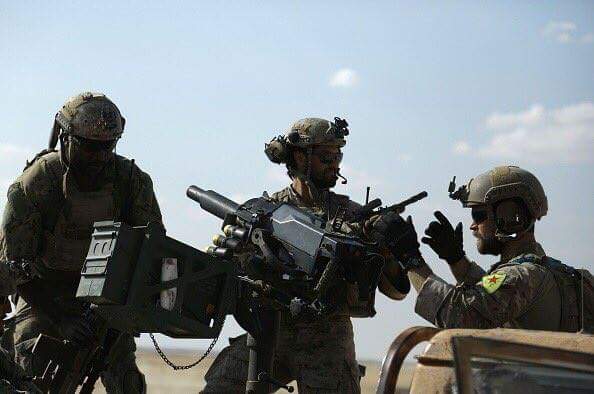



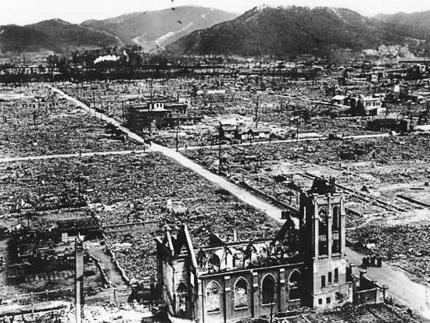







 Soviet nuclear weapons were placed in Cuba. Fidel Castro and Russia’s generals intended to use them if the USA attacked. A Russian submarine that came under attack carried a nuclear weapon. A nuclear attack on the US was closer than we knew.
Soviet nuclear weapons were placed in Cuba. Fidel Castro and Russia’s generals intended to use them if the USA attacked. A Russian submarine that came under attack carried a nuclear weapon. A nuclear attack on the US was closer than we knew.

























